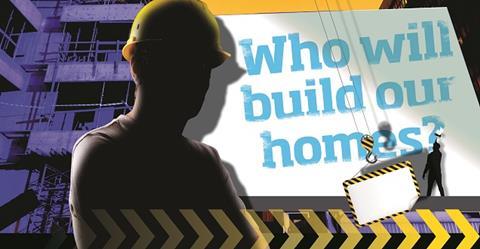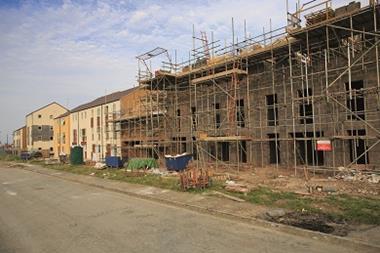We are entering uncertain times and attention has quickly turned to the impact of that uncertainty on the delivery of homes

We are nowhere near the 250,000 homes we need to build each year in order to meet current need, and this air of uncertainty is likely to further dent progress towards that target.
And it hasn’t taken long, amid the general worry about how we meet our housing needs, the planning system has been blamed, again, and in new and colourful ways. I saw it described as a byzantine system recently. I had to look that up.
It is fair to say the system could use some work, or at least some proper resourcing at local planning authority level, to ensure increased speed of delivery.
But the repeated criticisms overlook some other important factors that prevent the homes being built; or at least would if we could magically deliver permissions for all the homes we need.
Let’s start with bricks. The brick shortage has been much-publicised and, depending on which report you believe, has either ended or is still a crisis.
Our experience at least is that lead-in times for ordering bricks are commensurately as long as timescales for determining planning applications or agreeing s106s. But even if the shortage is considered to be over, you can be sure that the current supply would never be able to keep up with the demand should the permissions all magically fall into place.
And it follows that if there’s a shortage of bricks against current demand then an instantaneous permission pipeline for all the homes we need would cause acute shortages of any number of other building materials.
Source to match demand
Some might be more easy to source or manufacture quickly to match demand, as one would expect them to be in any case, but there are sure to be other materials that would require considerable lead-in times to get production to levels to match the demand should we have permissions ready to go for 250,000 homes per year.
Perhaps more important than the materials, are the people to put them in place.
Finding a skilled workforce is proving difficult for many developers, and the shortage of workers is driving up build costs. A doubling of our pipeline for new homes could simply not be sustained by our current workforce.
None of these problems are, of course, insurmountable. And one might argue that had the planning system kept pace with delivery of permissions in line with national targets that the raw materials and workforce would have kept pace with them. In that regard the argument is somewhat circular, as well as being whimsical.
But it is impossible divorce these issues from the current climate of uncertainty surrounding Europe. Not only does mainland Europe provide a substantial part of our building workforce but it is a source of materials as well.
A break in economic ties from the continent could make the issue more real, and we could find ourselves in a position that the materials and workforce really cannot keep pace with planning permissions. Wouldn’t that be a turnaround?
Grant Leggett is head of Boyer’s London office

































No comments yet